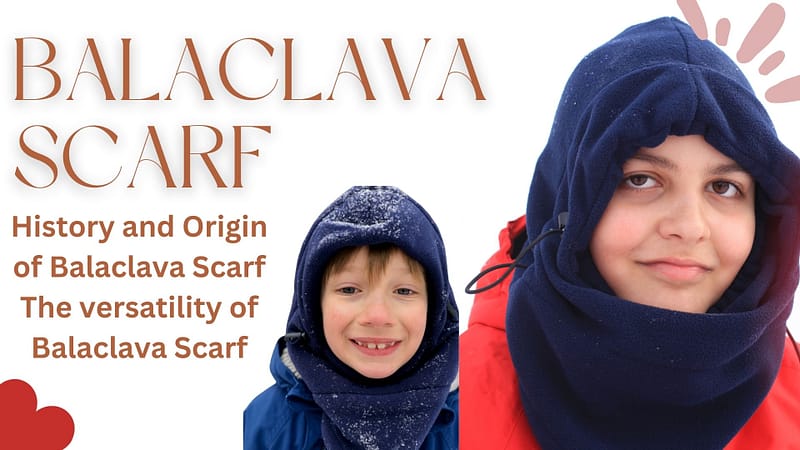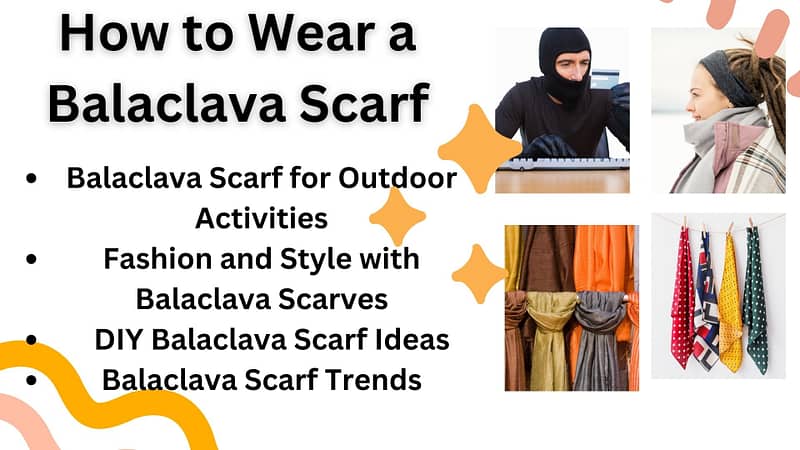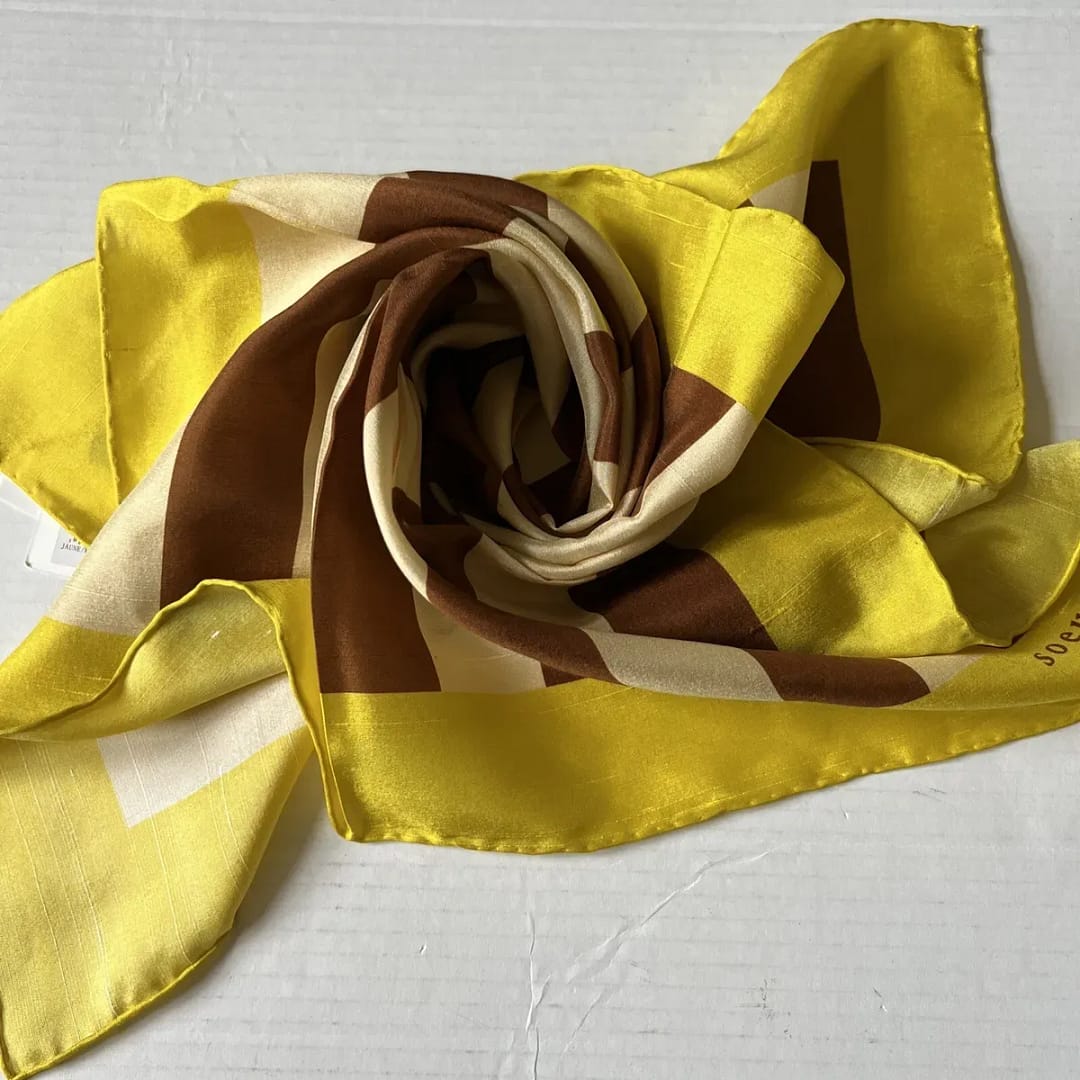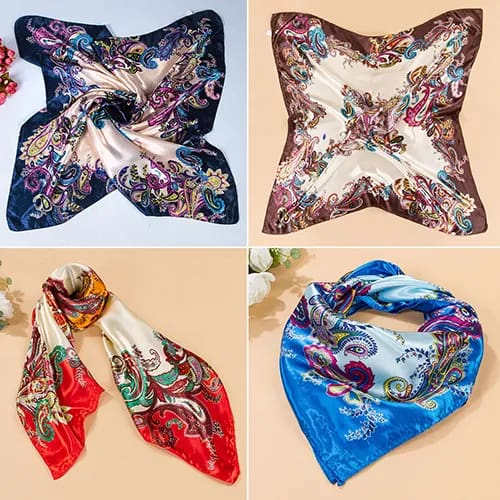The Versatile Balaclava Scarf: A Winter Essential

Winter brings with it the need for warmth and protection against biting winds and freezing temperatures. Among the array of cold-weather accessories, the balaclava scarf stands out as a versatile and indispensable piece. With its origins rooted in practicality, the balaclava scarf has evolved into a fashion statement and a must-have item for outdoor enthusiasts and fashionistas alike.
A balaclava scarf, often simply called a balaclava, is a type of headgear that covers the head, face, and neck. It is designed to protect from the elements, particularly in cold weather conditions. Balaclava scarves are typically made from materials such as wool, fleece, or synthetic fabrics, offering insulation and comfort.
History and Origin of Balaclava Scarf
The balaclava scarf traces its origins back to the Crimean War of the 1850s when British soldiers stationed in the region began using knitted headgear to keep warm in the harsh winter climate. Named after the Battle of Balaclava, where these garments were first used, the balaclava scarf soon became a standard issue for military personnel in cold environments.
The versatility of Balaclava Scarf
One of the key features of the balaclava scarf is its versatility. Unlike traditional scarves or hats, the balaclava scarf provides comprehensive coverage, protecting not only the head but also the face and neck. This makes it ideal for a wide range of outdoor activities, from skiing and snowboarding to hiking and cycling.
Materials Used in Making Balaclava Scarves
Balaclava scarves are crafted from various materials, each offering its own unique benefits. Wool is prized for its warmth and moisture-wicking properties, while fleece is soft, lightweight, and quick-drying. Synthetic fabrics like polyester and nylon are often used for their durability and weather resistance.
Types of Balaclava Scarves
There are several types of balaclava scarves available, catering to different preferences and needs. Full-face balaclavas cover the entire face, leaving only the eyes exposed, providing maximum protection from the cold. Half-face balaclavas cover the lower half of the face, while convertible balaclavas can be adjusted to cover varying degrees of the face and neck.
Benefits of Balaclava Scarves
The benefits of balaclava scarves extend beyond warmth and protection. Their snug fit helps to retain body heat, preventing heat loss in cold weather. Additionally, the moisture-wicking properties of certain materials keep the skin dry and comfortable during physical activity.
How to Wear a Balaclava Scarf

Wearing a balaclava scarf is simple yet effective. Begin by placing the opening over your head, ensuring that the eye and mouth openings align correctly. Pull the scarf down over your neck and adjust as needed to cover your face, leaving only your eyes and nose exposed.
Balaclava Scarf for Outdoor Activities
Balaclava scarves are essential gear for a variety of outdoor pursuits, offering protection and comfort in challenging environments. Whether you’re skiing down slopes, riding a motorcycle, or cycling through winter landscapes, a balaclava scarf can keep you warm and shielded from the elements.
Skiing and Snowboarding
In alpine sports such as skiing and snowboarding, staying warm is crucial for performance and enjoyment. A balaclava scarf provides insulation against cold winds and snow, ensuring that you can focus on carving turns and shredding powder
without discomfort.
Motorcycling
Motorcyclists often face cold winds and low temperatures, especially during long rides or in inclement weather. A balaclava scarf protects the face and neck, reducing wind chill and enhancing rider comfort on the road.
Cycling
Cycling enthusiasts brave the elements year-round, facing cold temperatures and wind chill during winter rides. A balaclava scarf offers warmth and wind protection, allowing cyclists to pedal comfortably and stay focused on the road ahead.
Fashion and Style with Balaclava Scarves
Beyond their practical utility, balaclava scarves have become a fashion statement in their own right. With a variety of colors, patterns, and designs available, balaclava scarves offer endless styling possibilities. Whether paired with casual streetwear or layered under a winter coat, balaclava scarves add a touch of warmth and flair to any outfit.
Maintenance and Care Tips for Balaclava Scarves
To prolong the life of your balaclava scarf and keep it looking its best, proper maintenance is essential. Follow these tips to care for your balaclava scarf:
- Wash gently: Hand washes your balaclava scarf in cold water with a mild detergent to preserve its shape and elasticity.
- Air dry: Avoid using a dryer, as high heat can damage the fabric. Instead, lay your balaclava scarf flat to air dry.
- Store properly: Fold your balaclava scarf neatly and store it in a dry, well-ventilated area to prevent mildew and odors.
- Avoid harsh chemicals: Refrain from using bleach or fabric softeners, as they can weaken the fibers of your balaclava scarf over time.
Choosing the Right Balaclava Scarf for You
When selecting a balaclava scarf, consider factors such as material, fit, and intended use. Choose a material that offers the right balance of warmth, breathability, and moisture-wicking properties for your needs. Additionally, ensure that the balaclava scarf fits comfortably and securely, with openings aligned properly for visibility and airflow.
Balaclava Scarf as a Winter Essential
The balaclava scarf is an essential winter accessory that offers unparalleled protection against the cold. Its snug fit and full coverage design keep the head, face, and neck warm, making it ideal for outdoor activities in chilly weather. Whether you’re skiing on the slopes, commuting to work, or enjoying a winter hike, a balaclava scarf provides insulation and shields you from harsh winds and freezing temperatures. Made from materials like wool, fleece, or synthetic fabrics, balaclava scarves are lightweight, breathable, and comfortable to wear for extended periods. Its versatility allows for easy adaptation to various conditions, ensuring that you stay cozy and comfortable no matter the outdoor adventure. Don’t let the cold weather hold you back – make the balaclava scarf your go-to winter essential for warmth, comfort, and protection.
DIY Balaclava Scarf Ideas
Creating your balaclava scarf can be a fun and rewarding DIY project. Here are some simple yet creative ideas to inspire your crafting endeavors:
- Knitted Balaclava Scarf: If you’re handy with knitting needles, try knitting your balaclava scarf. Choose a soft, warm yarn in your favorite color and follow a basic balaclava pattern. You can customize the design with different stitches or add embellishments like pom-poms or tassels for a personal touch.
- Fleece Balaclava Scarf: For a quick and easy DIY option, consider making a balaclava scarf from fleece fabric. Simply trace and cut out a pattern based on the dimensions of your head and neck, then sew the pieces together using a sewing machine or needle and thread. Fleece is soft, warm, and easy to work with, making it an ideal choice for homemade balaclava scarves.
- Upcycled Balaclava Scarf: Get creative with upcycling by repurposing old clothing or fabric scraps into a unique balaclava scarf. Look for old sweaters, t-shirts, or even blankets that you no longer use, and cut them into pieces to assemble your balaclava scarf. Not only is upcycling environmentally friendly, but it also adds a personal touch to your handmade creation.
- No-Sew Balaclava Scarf: If you’re not confident in your sewing skills, don’t worry – you can still make a balaclava scarf without any sewing required. Choose a stretchy fabric like jersey or spandex and cut out a large rectangle that’s wide enough to cover your head and long enough to wrap around your neck. Then, simply fold the fabric in half lengthwise and secure the edges with fabric glue or adhesive tape for a no-sew balaclava scarf in minutes.
Balaclava Scarf Trends
Balaclava scarves have evolved beyond their functional origins to become fashionable accessories that add style and flair to any winter outfit. Here are some trending styles and designs to look out for:
- Chunky Knits: Chunky knit balaclava scarves are a cozy and stylish option for cold weather. Look for scarves with oversized stitches and thick yarns for maximum warmth and texture.
- Prints and Patterns: From classic stripes and plaids to bold geometric prints and animal motifs, balaclava scarves come in a variety of eye-catching patterns to suit every taste. Experiment with different prints to add personality to your winter wardrobe.
- Color Blocking: Color blocking is a popular trend in fashion, and balaclava scarves are no exception. Opt for scarves with contrasting colors or bold color combinations to make a statement and stand out from the crowd.
- Convertible Styles: Convertible balaclava scarves offer versatility and functionality, allowing you to adjust the coverage according to your needs. Look for scarves with detachable or adjustable panels that can be worn in multiple ways, from a full-face mask to a cozy neck warmer.
Conclusion
In conclusion, the balaclava scarf is more than just a practical accessory for braving the cold – it’s a versatile and stylish staple of winter fashion. Whether you choose to knit your scarf, upcycle old materials, or invest in a trendy new design, the balaclava scarf offers endless possibilities for creativity and personal expression. Stay warm, stay stylish, and embrace the comfort and convenience of the balaclava scarf this winter season.
A balaclava scarf is a type of headgear that covers the head, face, and neck, providing full protection from the cold. Unlike a regular scarf, which only wraps around the neck, a balaclava scarf offers comprehensive coverage, making it ideal for extreme weather conditions.
While balaclava scarves are commonly used during the winter months to stay warm, they can also be worn in other cold-weather situations, such as during outdoor sports or activities like skiing, snowboarding, or hiking.
Balaclava scarves can be made from various materials, including wool, fleece, acrylic, polyester, and blends of these fabrics. Each material offers different levels of warmth, breathability, and moisture-wicking properties.
Washing instructions for balaclava scarves vary depending on the material. In general, it’s best to hand wash your scarf in cold water with a mild detergent and lay it flat to dry. Avoid using bleach or fabric softeners, as they can damage the fabric.
Yes, many balaclava scarves are designed to be worn comfortably with glasses or goggles. Look for scarves with adjustable or stretchy fabric around the eye area for a snug yet comfortable fit.
Yes, balaclava scarves typically come in one-size-fits-all designs that can accommodate various head shapes and sizes. Stretchy materials like fleece or spandex ensure a comfortable and secure fit for most wearers.
While some balaclava scarves may offer water resistance to a certain degree, most are not fully waterproof. However, certain materials like polyester or nylon may provide better protection against moisture than others.
Yes, balaclava scarves are designed to be thin and lightweight enough to fit comfortably under helmets. They provide an extra layer of warmth and insulation without compromising helmet fit or safety.
Yes, there are balaclava scarves available in smaller sizes designed specifically for children. These scarves offer the same protection and warmth as adult-sized versions but are tailored to fit smaller heads.
Balaclava scarves made from hypoallergenic materials like organic cotton or bamboo may be a better option for individuals with sensitive skin or allergies. It’s essential to check the fabric content and choose a scarf that won’t irritate your skin.







